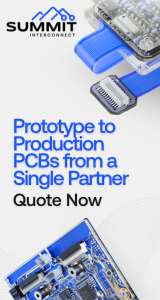|

|
|
| Ask the Experts | |||||||
|
|||||||
|
September 18, 2025 - Updated February 16, 2009 - Originally Posted Type III vs. Type IV solder pasteWhat are the determining factors in switching from Type III solder paste to a Type IV solder paste as it relates to our screen printing process? R.W. |
|||||||
| Expert Panel Responses | |||||||
|
Typically as the stencil aperture / pad dimension reduces, a smaller solder particle size may be needed. Rules of thumb
A good flux with Type 3 powder can be better at paste transfer than a bad flux with Type 4 powder
Technical Manager - Europe Indium Corp. Currently with Indium Corporation and responsible for technology programs and technical support for customers in Europe. Over 15 yrs experience in SMT, Power, Thermal & Semiconductor Applications. Masters Degree in Industrial Engg, State University of New York-Binghamton.
Type 3 solder paste is generally considered to be the industry standard that will work for most printing applications. The use of Type 4 is really only needed for particularly fine-feature printing, where the Type 4 will produce better release and a more consistent volume deposit. The breaking point for Type 3 solder paste in printing applications is generally considered to be in the range of a 9-mil stencil aperture width for most pastes, although other variables such as paste chemistry, stencil thickness and other printer parameters can impact this somewhat. This means that Type 3 paste will generally work well down to an aperture with an opening of 9 mils or greater. For apertures that are narrower than 9 mils in width, the user is best off using Type 4 paste to assure consistent release from the stencil. The rule of thumb that is appropriate in this case is called the "Five-Ball Rule." This rule says that you need to be able to fit five of the largest powder particles across the narrowest aperture in order to achieve good stencil release. Since Type 3 paste has a specification of 25 - 45 microns (roughly 1.0 - 1.8 mils), you can fit 5 of the largest powder particles across a 9-mil stencil aperture (5 particles x 1.8 mils per particle = 9 mils). If the aperture were any smaller than 9 mils, the Type 3 paste would fail the Five-Ball Rule and the user should consider Type 4 powder instead.
General Manager - Electronic Assembly Americas DEK International Mr. Smith has been supporting customers in the electronics assembly industry since 1994. His expertise is focused on solder paste printing and reducing soldering defects. He holds a BS in Chemical Engineering and an MBA in Marketing. He has authored several papers in trade magazines and at industry conferences. He is an SMTA Certified Process Engineer.
The major reason to choose a Type-4 powder over Type-3 is to improve printing in small apertures. As a general rule of thumb, we recommend using 16mil pitch, and micro BGAs from 10mil and below and as a cut-off point for type-3 powder. In typical design rules, pad width is roughly half its pitch, so a 16mil pitch component will have a pad width of approximately 8 mil. We have found that the stencil can have a greater impact on improved printing than powder. Some of the new Fine Grain foils allow for paste release down to a .45 surface area ratio. Work closely with your stencil provider to ensure they are able to provide you with the latest technology and best solution to meet your needs.
President FCT Assembly Mike Scimeca created FCT Assembly after the purchase of Fine Line Stencil, Inc., and consists of two major operations: stencil manufacturing and the manufacturing of electronic assembly products such as solder paste, flux and solder bar.
The normal rule of thumb is the stencil aperture should be at least 5 times the average solder sphere in the solder paste. Type 3 solder paste has an average solder sphere of 36 microns. So any aperture smaller than 180 microns (7 mils) should use type 4 solder paste. The average solder sphere for type 4 is 30 microns. So any aperture smaller than 150 microns (6mils) should use type 5 paste.
Vice President Technology Photo Stencil For over 18 years, Dr. Coleman has been the vice president of technology for Photo Stencil, working closely with customers to understand their printing requirements. His efforts have resulted in several new stencil products.
All good answers. However, a word of caution. Arbitrarily switching from Type 3 to Type 4 is not a good idea without first making sure your printing process is optimized and also has the repeatability to print the paste completely on the pads. Because the fines in the paste are smaller, any misprints can cause tiny solder spheres to be jammed or entrapped between the edges of the soldermask and the edges of the pads. But if your printing process is capable, then the use of Type 4 is a good thing because you will also gain overall better wetting on both very small AND larger pad sizes. I use Type 4 on all products at three of the companies I work for. Each saw a good reduction in the DPMO once the process was optimized and we switched over.
Advanced Engineer/Scientist General Dynamics Richard D. Stadem is an advanced engineer/scientist for General Dynamics and is also a consulting engineer for other companies. He has 38 years of engineering experience having worked for Honeywell, ADC, Pemstar (now Benchmark), Analog Technologies, and General Dynamics.
|
|||||||
| Submit A Comment | |||||||
|
Comments are reviewed prior to posting. You must include your full name to have your comments posted. We will not post your email address. |
|
Free Newsletter Subscription
Circuitnet is built for professionals who bear the responsibility of looking ahead, imagining the future, and preparing for it. Insert Your Email Address |
|

|






